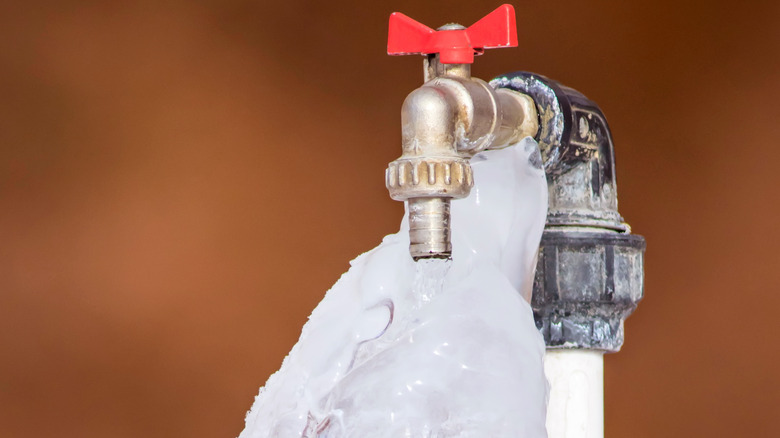Protecting Against Frozen Pipes: Top Strategies for Cold Weather
Protecting Against Frozen Pipes: Top Strategies for Cold Weather
Blog Article
What're your thoughts on Winter Plumbing Precautions: Preventing Frozen Pipes?

Winter can ruin your pipes, particularly by freezing pipelines. Below's just how to stop it from occurring and what to do if it does.
Introduction
As temperatures drop, the threat of icy pipelines boosts, potentially leading to pricey fixings and water damage. Understanding just how to avoid frozen pipes is critical for house owners in cold environments.
Prevention Tips
Shielding prone pipelines
Wrap pipelines in insulation sleeves or use warm tape to protect them from freezing temperatures. Focus on pipes in unheated or external areas of the home.
Home heating methods
Maintain interior areas sufficiently warmed, especially locations with pipes. Open cupboard doors to enable cozy air to flow around pipes under sinks.
How to determine icy pipelines
Seek lowered water flow from taps, unusual smells or noises from pipes, and visible frost on subjected pipes.
Long-Term Solutions
Structural modifications
Think about rerouting pipes far from exterior walls or unheated areas. Include added insulation to attic rooms, basements, and crawl spaces.
Upgrading insulation
Buy high-quality insulation for pipelines, attics, and wall surfaces. Appropriate insulation helps keep constant temperatures and reduces the threat of frozen pipelines.
Securing Outdoor Pipes
Yard hose pipes and exterior faucets
Separate and drain yard hose pipes prior to winter season. Mount frost-proof spigots or cover exterior faucets with protected caps.
Understanding Frozen Pipelines
What creates pipes to ice up?
Pipelines freeze when subjected to temperature levels below 32 ° F (0 ° C) for prolonged durations. As water inside the pipelines ices up, it expands, taxing the pipeline wall surfaces and possibly triggering them to burst.
Risks and problems
Icy pipelines can lead to water system disturbances, residential or commercial property damage, and costly repair work. Burst pipes can flood homes and create considerable architectural damage.
Indications of Frozen Water Lines
Identifying icy pipelines early can avoid them from bursting.
What to Do If Your Pipelines Freeze
Immediate activities to take
If you believe icy pipes, maintain taps open to relieve stress as the ice melts. Make use of a hairdryer or towels soaked in hot water to thaw pipelines slowly.
Verdict
Stopping frozen pipelines requires aggressive steps and fast reactions. By recognizing the causes, indicators, and preventive measures, house owners can protect their plumbing throughout winter.
5 Ways to Prevent Frozen Pipes
Drain Outdoor Faucets and Disconnect Hoses
First, close the shut-off valve that controls the flow of water in the pipe to your outdoor faucet. Then, head outside to disconnect and drain your hose and open the outdoor faucet to allow the water to completely drain out of the line. Turn off the faucet when done. Finally, head back to the shut-off valve and drain the remaining water inside the pipe into a bucket or container. Additionally, if you have a home irrigation system, you should consider hiring an expert to clear the system of water each year.
Insulate Pipes
One of the best and most cost-effective methods for preventing frozen water pipes is to wrap your pipes with insulation. This is especially important for areas in your home that aren’t exposed to heat, such as an attic. We suggest using foam sleeves, which can typically be found at your local hardware store.
Keep Heat Running at 65
Your pipes are located inside your walls, and the temperature there is much colder than the rest of the house. To prevent your pipes from freezing, The Insurance Information Institute suggests that you keep your home heated to at least 65 degrees, even when traveling. You may want to invest in smart devices that can keep an eye on the temperature in your home while you’re away.
Leave Water Dripping
Moving water — even a small trickle — can prevent ice from forming inside your pipes. When freezing temps are imminent, start a drip of water from all faucets that serve exposed pipes. Leaving a few faucets running will also help relieve pressure inside the pipes and help prevent a rupture if the water inside freezes.
Open Cupboard Doors
Warm your kitchen and bathroom pipes by opening cupboards and vanities. You should also leave your interior doors ajar to help warm air circulate evenly throughout your home.

As a serious person who reads on How To Avoid Freezing Pipes, I imagined sharing that topic was really helpful. If you liked our blog post kindly do not forget to pass it around. I take joy in reading our article about How to Prevent Your Pipes From Freezing.
Contact Us Today Report this page